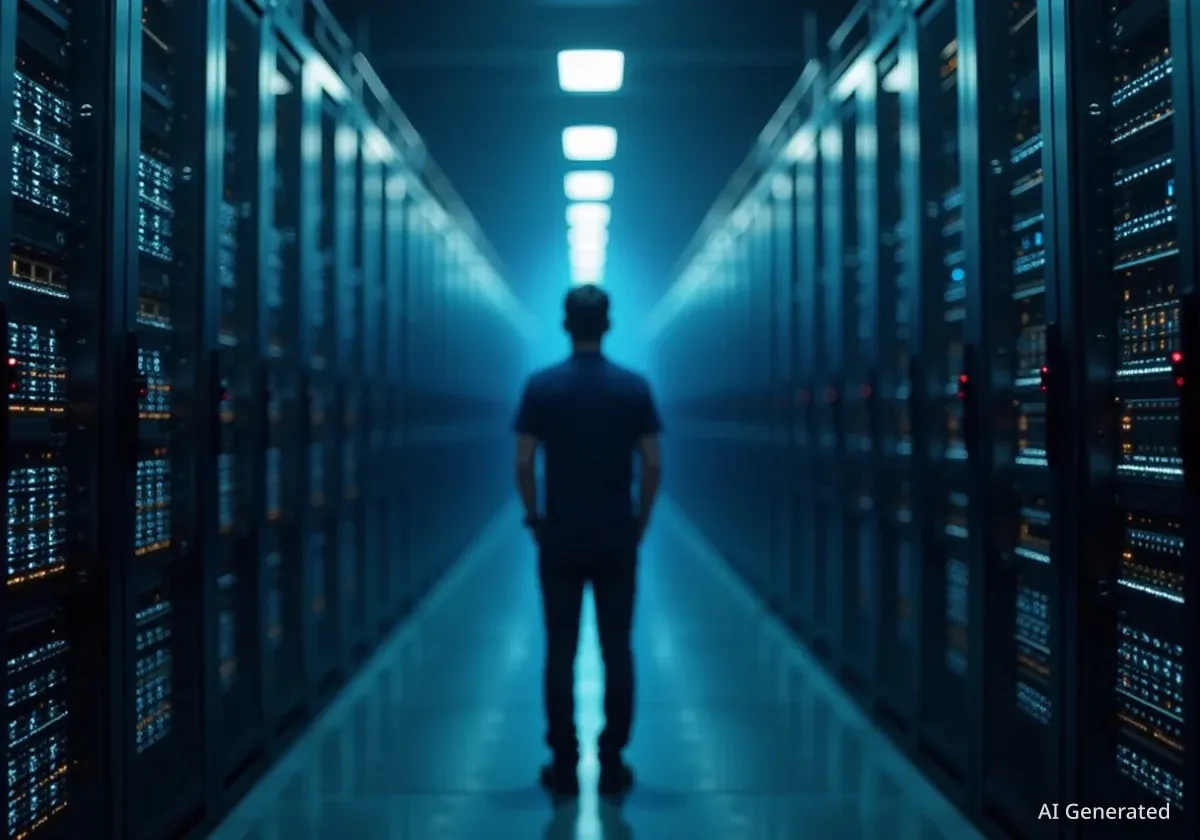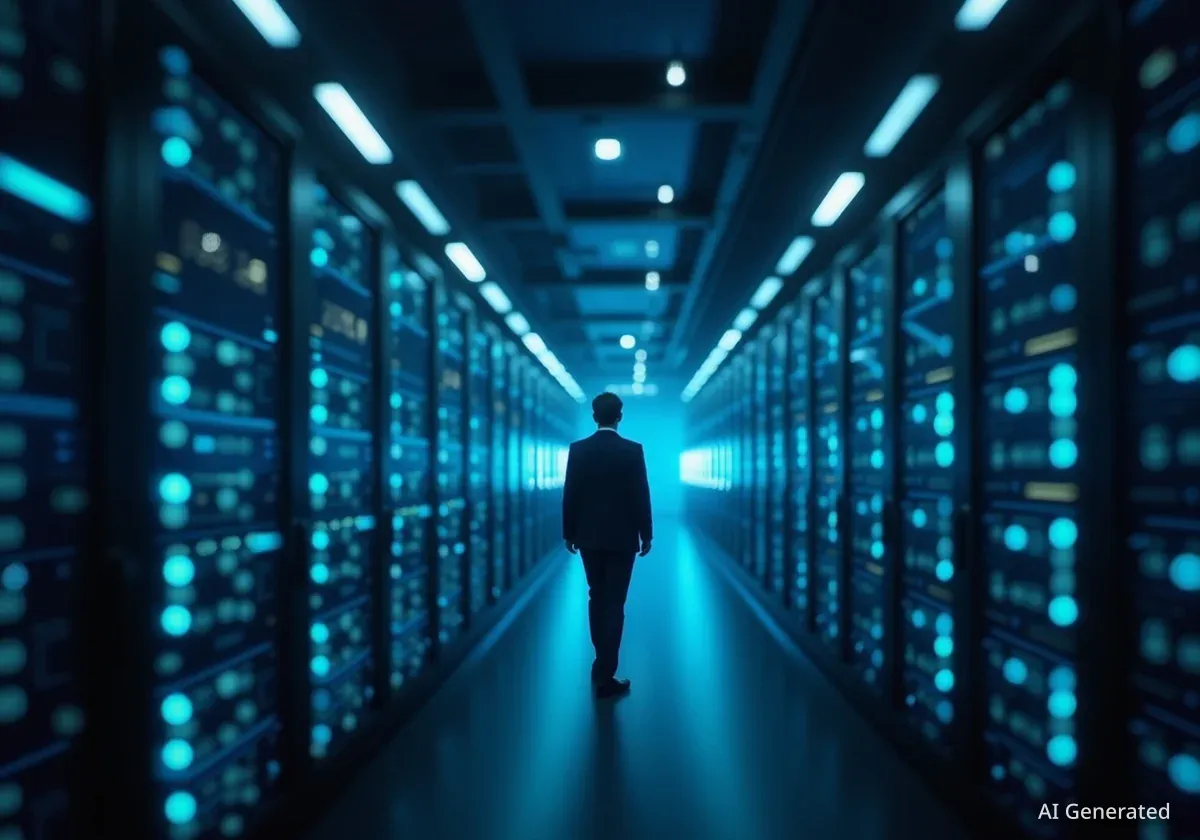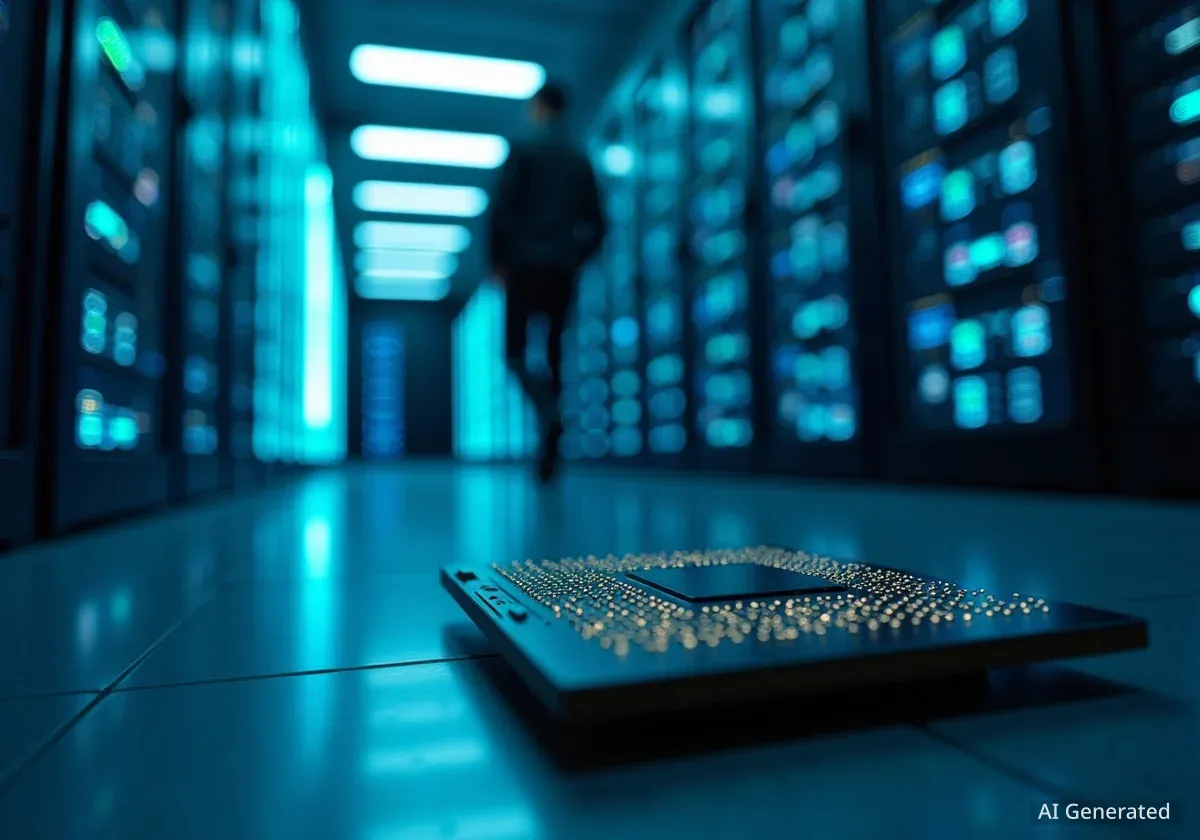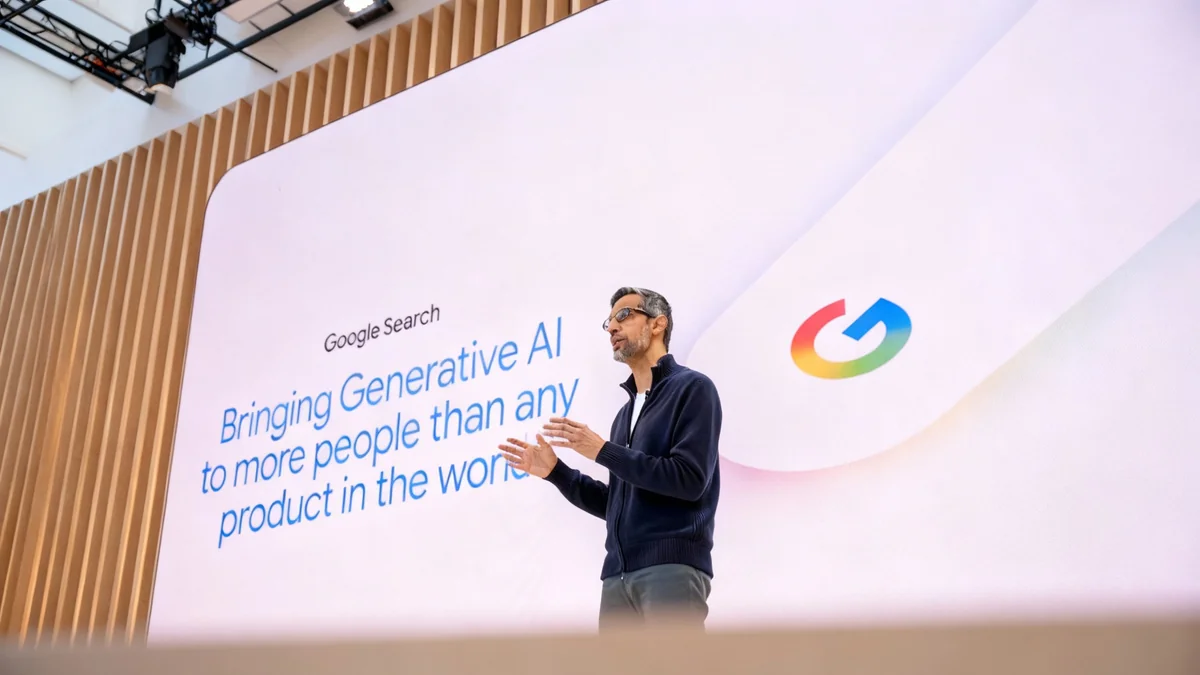Microsoft has begun deploying its first large-scale artificial intelligence system, which it plans to replicate across its global data center network. In a social media post, CEO Satya Nadella confirmed the launch of the massive AI cluster, describing it as the "first of many" such systems designed to power workloads for its key partner, OpenAI.
The new infrastructure, referred to as an "AI factory," is built on advanced technology from Nvidia. This strategic investment underscores the intense competition among major technology companies to build the computational power necessary for developing and running next-generation AI models.
Key Takeaways
- Microsoft has launched its first massive AI system, built with Nvidia hardware, to support OpenAI workloads.
- Each system consists of over 4,600 Nvidia GB300 rack computers featuring the new Blackwell Ultra GPU.
- The company plans to deploy hundreds of thousands of these GPUs across its global Azure data centers.
- The announcement follows OpenAI's separate deals with Nvidia and AMD to build its own data center infrastructure.
- Microsoft emphasizes its existing network of over 300 data centers as a key advantage in the AI race.
Microsoft's AI Infrastructure Expansion
Microsoft is significantly increasing its capacity to handle advanced AI computations. The company announced the deployment of a powerful new system, a model it intends to roll out globally. CEO Satya Nadella showcased the initial system in a video, signaling a major step in the company's AI strategy.
These systems are specifically engineered to manage the demanding requirements of OpenAI's models. By building this specialized infrastructure, Microsoft aims to solidify its position as a leading provider of AI cloud services through its Azure platform.
The company stated its goal is to install hundreds of thousands of Nvidia's latest GPUs as it expands these AI factories worldwide. This large-scale deployment is designed to ensure Microsoft can meet the growing demand for AI training and inference, which are the processes of building and using AI models, respectively.
What is an AI Factory?
The term "AI factory," popularized by Nvidia, refers to a data center or a large cluster of servers specifically designed for AI workloads. Unlike traditional data centers built for general-purpose computing, AI factories are optimized for the massive parallel processing required to train large language models and other complex AI systems. They feature high-density racks of GPUs, specialized high-speed networking, and advanced cooling systems.
The Technology Behind the System
Advanced Nvidia Hardware
The core of Microsoft's new AI system is a cluster of more than 4,600 Nvidia GB300 rack computers. Each of these units is equipped with the highly sought-after Blackwell Ultra GPU, Nvidia's latest and most powerful chip designed for AI.
The Blackwell architecture represents a significant leap in performance over previous generations, enabling the training of much larger and more complex models. According to Microsoft, this new hardware is capable of running future AI models with "hundreds of trillions of parameters," a scale that far exceeds today's most advanced systems.
High-Speed Networking is Crucial
To make thousands of GPUs work together as a single, cohesive supercomputer, high-speed connectivity is essential. Microsoft's AI factories utilize Nvidia's InfiniBand networking technology, which provides the extremely high bandwidth and low latency needed for large-scale AI training.
Strategic Acquisition
Nvidia secured its leadership in high-performance networking through its $6.9 billion acquisition of Mellanox in 2019. This move gave Nvidia control over InfiniBand technology, a critical component that prevents data bottlenecks in massive GPU clusters, ensuring the processors are used at maximum efficiency.
Competitive Landscape and Strategic Timing
The timing of Microsoft's announcement is notable. It comes shortly after its partner, OpenAI, secured its own high-profile agreements with both Nvidia and AMD to develop independent data center capabilities. This move by OpenAI signaled a potential shift in its infrastructure strategy.
OpenAI CEO Sam Altman has spoken about the need for vast computational resources, with some reports estimating the company has secured up to $1 trillion in commitments for data center construction in 2025. Altman also indicated that more such deals are forthcoming, highlighting the immense capital required to push the boundaries of AI research.
"We are uniquely positioned to meet the demands of frontier AI today," a Microsoft spokesperson stated, emphasizing the company's existing global footprint.
By publicizing its new AI factory, Microsoft is sending a clear message to the market. The company is asserting that it already possesses the global infrastructure needed to support the most advanced AI development, a direct counterpoint to efforts by partners and competitors to build their own from the ground up.
Global Reach and Future Outlook
Microsoft's primary advantage in this AI arms race is its extensive existing infrastructure. The company operates more than 300 data centers across 34 countries, a global network that provides a significant head start in deploying new AI systems at scale.
This widespread presence allows Microsoft to offer AI services with lower latency to customers around the world and helps navigate complex data sovereignty regulations. The new Nvidia systems will be integrated into this existing Azure network, enhancing its capabilities for a global client base.
Further details about Microsoft's AI strategy are expected soon. Microsoft CTO Kevin Scott is scheduled to speak at the TechCrunch Disrupt conference, which will be held from October 27 to October 29 in San Francisco. His presentation will likely provide more insight into the company's roadmap for AI infrastructure and its plans to serve the next generation of AI workloads.





